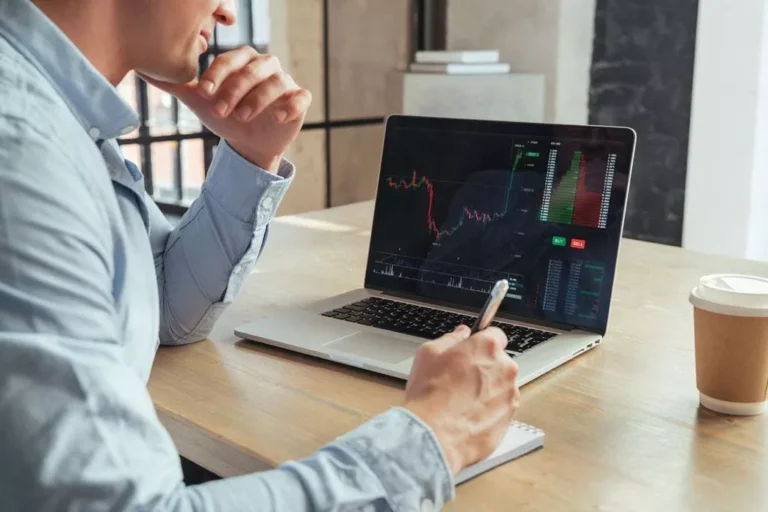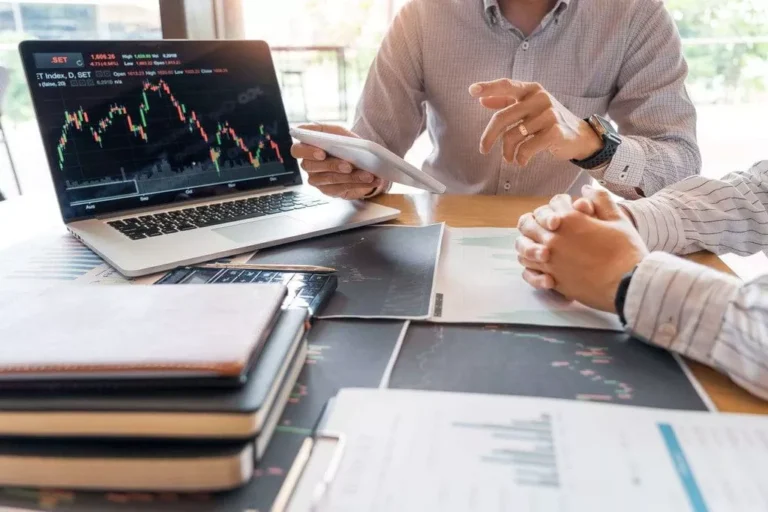Content
Crypto derivatives trading, while offering significant crypto derivative trading opportunities, comes with notable challenges. The complexity of these instruments requires a deep understanding of market dynamics and the specifics of each derivative type, posing a steep learning curve. Crypto futures are a type of derivative contract that allows two parties to agree on the price of a cryptocurrency at a fixed date in the future.
How do Crypto Derivatives Work?

Covered at length in the next section, perpetual futures are evergreen or non-expiring futures contracts that improve liquidity fragmentation and are now the most successful crypto trading instrument by volume. As the global crypto markets continue to mature, the digital asset derivatives market grows with it. Perpetual swaps have become especially popular among crypto traders, but even the futures and options markets have seen continuous growth over the years, signaling that there is demand for https://www.xcritical.com/ derivative contracts in this nascent digital asset class. Blockchain is increasingly demonstrating its potential to transform traditional systems in a way that can improve operational efficiency, expand optionality, and reduce costs.
Different Types of Crypto Derivatives
Crypto Derivatives are complex financial contracts whose value depends on the price of cryptocurrencies like Bitcoin, Ethereum, or others. These contracts derive their value from the underlying assets, enabling traders and investors to speculate on price movements without Non-fungible token owning cryptocurrencies. Perpetual swap contracts are financial derivatives that allow you to speculate on the price movement of crypto assets using leverage. But unlike traditional futures contracts, perpetual swaps don’t have expiration dates.
Key Players in the 2025 Derivatives Market
Tools like moving averages, Bollinger Bands, and the Relative Strength Index (RSI) can be invaluable. But remember, past performance isn’t always indicative of future results. My interest in financial markets and computers fueled my curiosity about blockchain technology. I’m interested in DeFi, L1s, L2s, rollups, and cryptoeconomics and how these innovations shape the blockchain industry as a growing global product.
What is the difference between crypto futures and crypto options?
The UK’s FCA banned the sale of crypto derivatives to retail consumers in October 2020. Each trade comes with fees, and these can add up quickly, especially if you’re trading frequently. Some fees to watch out for include trading fees, funding fees (for perpetual swaps), and withdrawal fees. OKX (formerly OKEx) offers a wide range of crypto products, including derivatives. Forwards are similar to futures, but they’re customized agreements between two parties, rather than standardized contracts traded on an exchange.
For example, the value of a Bitcoin derivative is determined by the value of Bitcoin. There are several crypto derivatives, each with a slightly different use. If the initial investment is 2 BTC, the profit will increase to 10 BTC, and the return on investment will double to 1000%.

By their respective definitions, American options contracts can be exercised anytime before the expiration date of the option, while European options contracts can be exercised only on the expiration date. Options are referred to as In-the-Money (ITM), Out-of-the-Money (OTM), or At-the-Money (ATM), depending on where the current market price is compared to the strike price. The option holder can also decide not to exercise at all, even when the expiry date occurs; in which case, the option contract expires, and the holder just loses the premium paid. AI-driven trading uses advanced algorithms to execute trades and manage risks.
Choosing the right crypto derivatives exchange is a nuanced decision that hinges on balancing important and non-essential factors. Ultimately, the goal is to select a platform that aligns with one’s trading strategy, offers a secure and efficient trading environment, and fosters a positive user experience. Compliance with regulatory standards may be paramount if you are looking for a centralized platform for derivatives trading, which typically offers higher regulatory assurance, undergoing strict oversight to protect users against fraud and insolvency. Traders should weigh the trade-offs between regulation and privacy to determine their ideal option. This Article does not offer the purchase or sale of any financial instruments or related services. Crypto derivatives give traders more control over their market strategies but expose them to risks not found in the spot market.
Before investing in crypto derivatives, it is important to become familiar with the process of cryptocurrency trading, obtain appropriate financial advice and only invest what you can afford to lose. The UK’s Financial Conduct Authority (FCA) has taken a firm stance on crypto derivatives. Since January 2020, the sale of crypto derivatives to retail consumers has been banned in the UK. The FCA cited the extreme volatility of cryptocurrencies and the difficulty for consumers to reliably value these products as reasons for the ban.
- Futures are a type of crypto derivative contract agreement between a buyer and seller to buy and/or sell a specific underlying asset (such as a cryptocurrency) at a set future date for a set price.
- The funding rate system also ensures that the swap is anchored to its underlying asset.
- For example, Opyn’s Crab Strategy vault is similar to a straddle, but it generates yield via funding by pairing a short Squeeth position versus long ETH in a delta-neutral fashion.
- In the crypto world, binary options let traders bet on the price of a cryptocurrency reaching a certain level in the future.
- As FuturCoin gains attention and adoption within the gaming industry, its price rises steadily.
- Bitcoin is a store of value asset, while cryptocurrencies like Ethereum and Solana fuel smart contract blockchains.
- Whether you’re a seasoned pro or just starting out, staying informed and employing smart strategies can pave the way to success.
A derivative can be based on practically anything, tangible or intangible, as long as it has a characteristic that can be assigned a price based on a mutually agreeable framework. As a result, there are a wide variety of derivatives — ranging from futures and options to swaps and collateralized debt obligations — that can be pegged to nearly anything imaginable, from the price of soybeans to the outcome of the next World Cup. They are an agreement to trade an asset on a future date, and are often used as a means to hedge a major investment position or gain leveraged market exposure to an asset without having to directly own that underlying asset.
Aggregated Order Books work by combining buy and sell orders from multiple exchanges, offering better liquidity, pricing, and trade execution. The funding rate system also ensures that the swap is anchored to its underlying asset. Crypto derivatives are traded on specialized cryptocurrency exchanges such as Gemini.
These platforms match buyers and sellers, manage the settlement of contracts, and often provide additional services such as margin trading and risk management tools. Given the high risk and volatility in the crypto market, traders need to employ strategies to minimize potential losses. These strategies may include setting stop-loss orders, diversifying investments, or hedging with different types of derivatives. One final major difference is the location of exchanges as an outcome of the regulatory landscape. Given wide regulatory disparities across jurisdictions, crypto exchanges selectively operate where allowed, and those with the largest suite of offerings often only operate in more lax jurisdictions. As such, the ability to access the full suite of the ecosystem’s trading services is arguably more dependent on jurisdiction than in traditional markets, with U.S.-persons generally unable to access crypto derivatives exchanges, as one example.
Futures contracts are said to be trading in contango (backwardation) when the price of the future is higher (lower) than spot. The incremental return that a futures contract generates outside of that derived from a change in the underlying’s spot price is known as the carry or roll yield (as the holder rolls up or down the futures curve through time). Perps now trade on hundreds of different crypto assets and dominate crypto trading volume and the price discovery process.
The up/down barriers were statically set at +/- 8% previously (fixed strike), but now they will be set by targeting 10 delta, allowing the barriers to fluctuate as expectations for volatility shift. To trade derivatives on the Crypto.com Exchange, users must not be in a geo-restricted jurisdiction. Here is a detailed step-by-step guide on how to enable derivatives on the Exchange. Common mistakes include overleveraging, emotional trading, lack of diversification, and ignoring market trends. Staying disciplined, informed, and diversified can help you avoid these pitfalls.
Liquidity is crucial for minimizing slippage, especially for large orders, and ensures that the market can absorb trades without significant price impacts. In the next section, we’ll discuss some important things to keep in mind as you start your journey into crypto derivatives trading. Now that we understand what crypto derivatives are and their types, let’s walk through how to actually trade them. Remember, this is a complex topic, so take your time to understand each step before you start trading with real money. It’s important to note that while derivatives can offer opportunities for profit, they also come with risks.






